At IDF last week Intel launched their new enterprise line of SSDs, the 710 Series. The SSD 710 is Intel’s first enterprise SSD in quite a while, the previous generation X25-E has been in the market for nearly three years. Over that span of time, a lot has changed in the enterprise space and those changes are reflected in the SSD 710. The most noticeable being the move from SLC NAND in the X25-E to 25nm MLC NAND with high endurance technology in the SSD 710 to drive down price and increase capacity. Other more subtle changes have taken place as well, including firmware optimized for endurance and an option for IT managers to modify the amount of over provisioning on the drives.
Endurance has long been Intel’s mantra when it comes to SSDs, even more so when it comes to the enterprise environment where drives are blasted with writes exponentially more than what’s normal in the typical client usage pattern. What this means with the SSD 710 is that with over provisioning set at 20% on the 300GB drive, the SSD achieves 4KB write endurance of up to 1.5 petabytes.
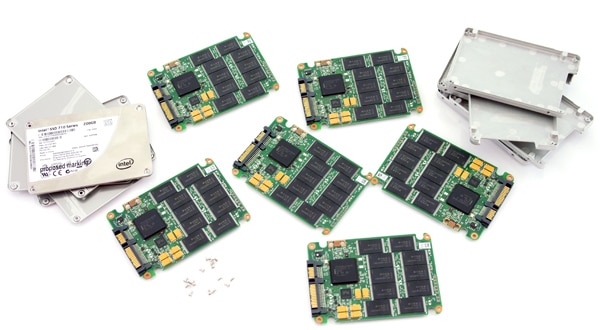
The 710 Series SSD improves on the performance seen in the X25-M, but with the SATA 3Gb/s interface and a usage profile geared toward grinding it out in the data center, the performance numbers aren’t spectacular. That said, in the right scenario, the Intel 710’s can boast some ridiculous scores, how about a 35 million IOPS? In single drive environments the 710 is expected to deliver random 4K read IOPS of 38,500 and 4K write IOPS of 2,700. In the enterprise though, those numbers are at steady state, delivered all the time, without drops as the drives see increased usage.
The 710 comes in 100GB, 200GB, and 300GB capacities in a slim 7mm 2.5″ form factor. Our review unit is a 200GB capacity, we will also be posting a RAID review with three 200GB 710 SSDs put through more rigorous enterprise-level benchmarking. For now though we start with a detailed look at the SSD 710 in single drive mode.
Intel SSD 710 Specifications:
- Capacity: 100/200/300 GB
- Intel 25nm NAND Flash Memory
- High Endurance Technology (HET) Multi-Level Cell (MLC)
- Form Factor: 2.5-inch, 7mm
- SATA 3Gb/s interface
- Random 4 KB Reads: Up to 38,500 IOPS
- Random 4 KB Writes: Up to 2,700 IOPS (4,000 IOPS3)
- Random 8 KB4 Reads: Up to 27,000 IOPS
- Random 8 KB Writes: Up to 1,900 IOPS (6,000 IOPS3)
- Bandwidth Performance, Sustained Sequential Read: Up to 270 MB/s, Sustained Sequential Write: Up to 210 MB/s
- Latency (average sequential), Read: 75 μs (TYP), Write: 85 μs (TYP)
- AES 128-bit Encryption
- Temperature monitoring
- Power Consumption: Active: up to 3.7W, Idle: 700mW
Design and Build
The new Intel SSD 710 looks a heck of a lot like the X25-E before it, but given how much SSD designs don’t really change through the iterations, this isn’t really surprising. The case is silver alloy design instead of black with the older X25-E, based around a 7mm drive height to save space over the slightly larger 9.5mm standard. On the consumer drives Intel uses a shim to make up this space, whereas on this model it is just not included.
The bottom is bare metal without any stickers present. The top sticker is all that Intel has used over the years, listing the various important pieces of information such as model number, capacity, serial number, firmware version, and the like. They didn’t even change the curved radius shape of the sticker, let alone color!
The front of the SSD 710 has the same SATA power and data connection without any service-mode pins located near it. All firmware updating takes place through software only, without any hardware intervention.
Disassembly
Taking the 200GB Intel SSD 710 apart is very easy with a simple Phillips head screwdriver. After removing the four screws located at the corners, which also hold the shim in place, the shim and top cover easily lift up. Once that is removed you are greeted with the underside of the circuit board, which in this case only includes NAND pieces.
With the way things are going in the SSD market, you might almost start off by saying “out with the old in with the new”. In the case of the Intel SSD 710, Intel stuck with what worked best; the good ole PC29AS21BA0 controller, with updated firmware to work with newer 25nm flash and enterprise features like increased over-provisioning. This controller has proved itself to be extremely reliable and versatile over the years, and proves itself yet again to have plenty of life left in it.
The flash is comprised of twenty 25nm Intel 29F16B08CCME1 16GB pieces, which according to Intel are the “cream of the crop” when it comes to selection from the Intel NAND Factory. When you make the stuff yourself, you can dictate who gets what, and in this case Intel picks the highest grade pieces for themselves. What this means for the consumer is no matter what, if you buy Intel gear you get the best Intel components.
There are two additional features of the Intel SSD 710 that haven’t been seen on previous consumer models. The first is the 64MB Hynix Mobile SDR 666Mhz H55S5162EFR-60M, which if you squint close enough you might be able to tell that it is much smaller than previous RAM offerings. This is because unlike using notebook/desktop grade DDR memory, they went with Mobile SDR, which as you can see takes up much less space.
The next change, which we will go into further detail in the power section, is the addition of capacitors to allow the SSD to continue writing data stored in cache to the NAND in the event of a power failure. While not exactly the latest super-capacitor technology as we have seen on other enterprise-class SSDs, this is still said to be enough to write the entire cache contents to NAND when the power is lost.
The bottom of the SSD is pretty bare, not counting the ten 25nm 16GB NAND pieces soldered to it. All of the cool stuff is located up on top.
Synthetic Performance
With three Intel 710 SSDs provided for review, we are covering both single drive and RAID 0, 1, 5 performance. In this review we will look at the drive in a client environment with follow-up RAID coverage next week. In this review we tested the 200GB Intel SSD 710 through the Intel 6.0Gb/s chipset on our test rig as well as a single-drive RAID0 through our LSI 9260-8i MegaRAID card.
The first group of benchmarks look at large sequential and random transfers with a 2MB transfer size using IOMeter. The Intel 6.0Gb/s stats show what uncached performance looks like, with the LSI 9260-8i results added in showing how performance differs routed through a 128k stripe size with write-back caching enabled.
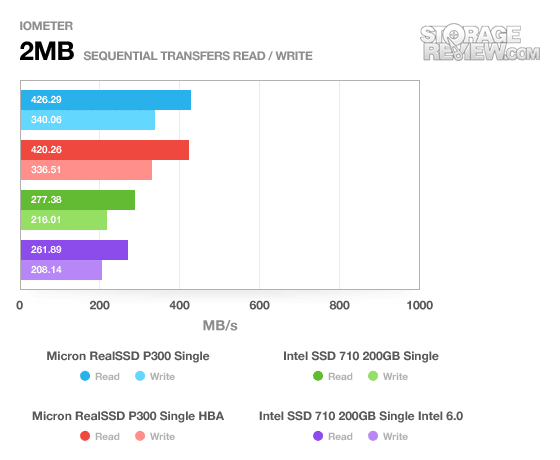
IOMeter 2MB sequential performance measured 277MB/s read and 216MB/s write over the LSI MegaRAID card and 261MB/s read and 208MB/s write through the Intel 6.0Gb/s interface . These values are very close to the official 270/210MB/s spec provided by Intel.
Switching to a random transfer test, but keeping the 2MB transfer size, we measured 224MB/s read and 189MB/s over the LSI RAID card and 217MB/s read and 207MB/s write over the Intel chipset.
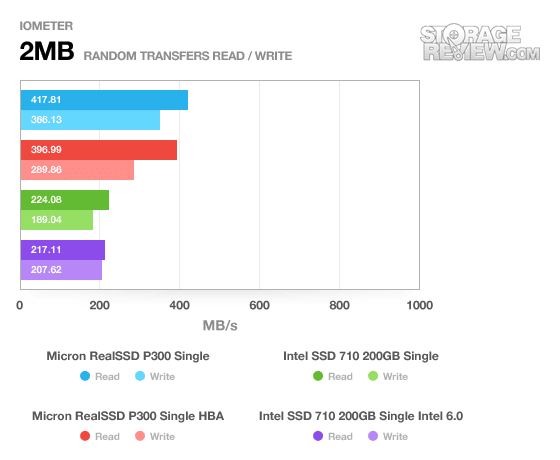
Changing to a 4K packet size at a queue depth of one, we look at how well the Intel SSD 710 handles random transfers while keeping latency as low as possible.
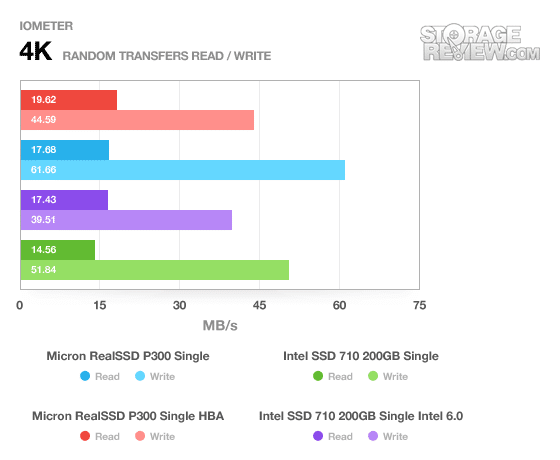
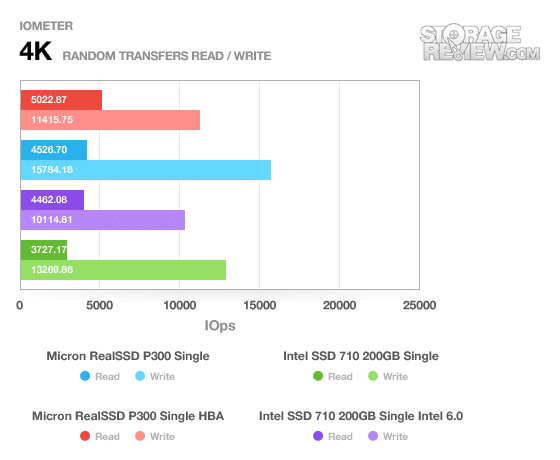
We measured 14.6MB/s read and 51.8MB/s write through the single RAID0 setup, translating out to 3,700 read and 13,300 write IOPS. Over the uncached Intel 6.0Gb/s interface read speeds measured slightly higher at 17.4MB/s or 4,400 IOPS with write speeds taking a small hit dropping to 39.5MB/s or 10,100 IOPS.
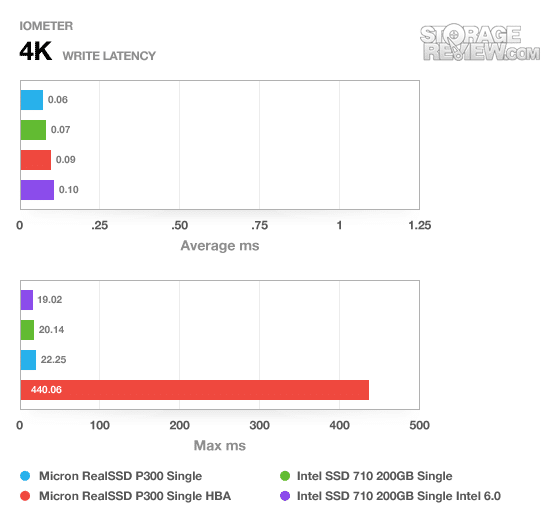
Average latency measured 0.098ms through the Intel 6.0Gb/s chipset and 0.075ms through the LSI MegaRAID RAID0 array. Peak latency stayed between 19 to 20ms for both of these tests.

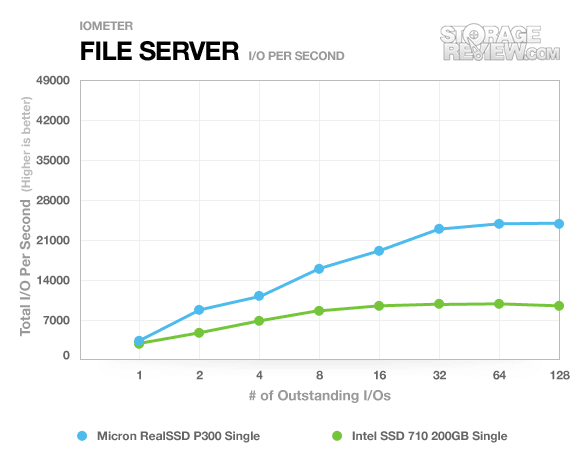
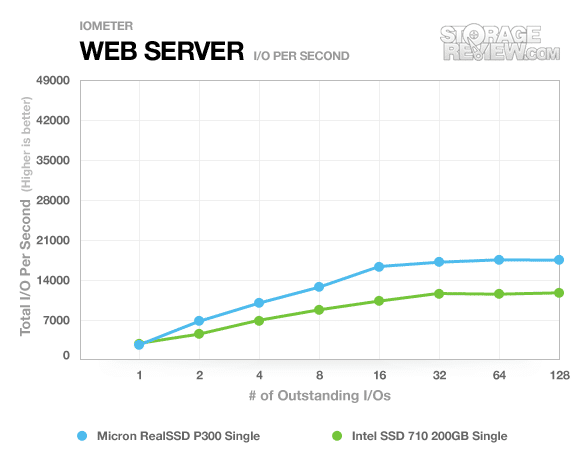
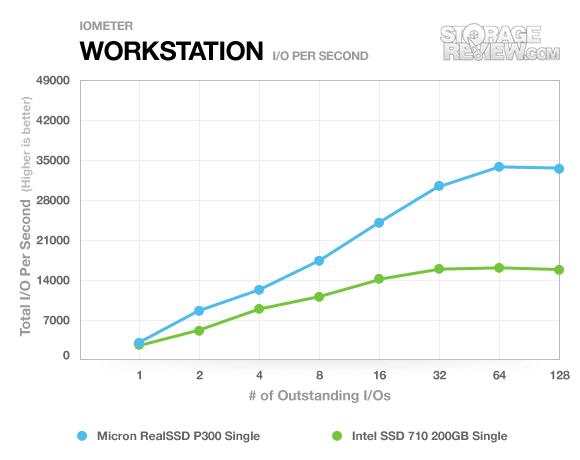
Real-World Performance
Our first section of real-world traces are more fitting for single-user consumer situations instead of multi-user enterprise settings, but we plan including our server traces in the follow-up Intel SSD 710 RAID Review. Until then we still wanted to include performance stats on the enterprise-class Intel SSD 710 in an HTPC, Productivity, and Gaming setting.
The first real-life test is our HTPC scenario. In this test we include: playing one 720P HD movie in Media Player Classic, one 480P SD movie playing in VLC, three movies downloading simultaneously through iTunes, and one 1080i HDTV stream being recorded through Windows Media Center over a 15 minute period. Higher IOps and MB/s rates with lower latency times are preferred. In this trace we recorded 2,986MB being written to the drive and 1,924MB being read.
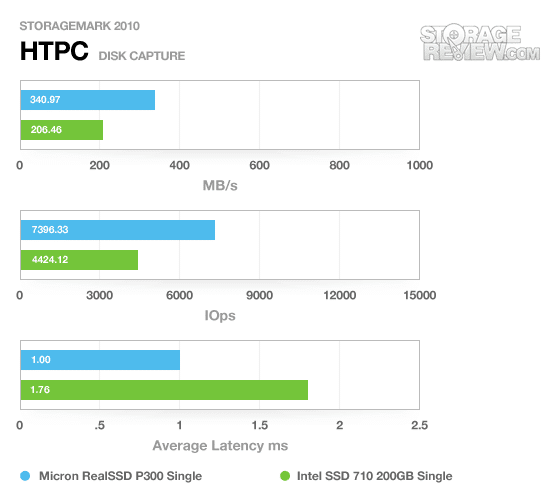
In the first trace covering our HTPC environment we measured an average transfer speed of 206MB/s and 4,420 IOPS with an average latency of 1.759ms.
Our second real-life test covers disk activity in a productivity scenario. For all intents and purposes this test shows drive performance under normal daily activity for most users. This test includes: a three hour period operating in an office productivity environment with 32-bit Vista running Outlook 2007 connected to an Exchange server, web browsing using Chrome and IE8, editing files within Office 2007, viewing PDFs in Adobe Reader, and an hour of local music playback with two hours of additional online music via Pandora. In this trace we recorded 4,830MB being written to the drive and 2,758MB being read.
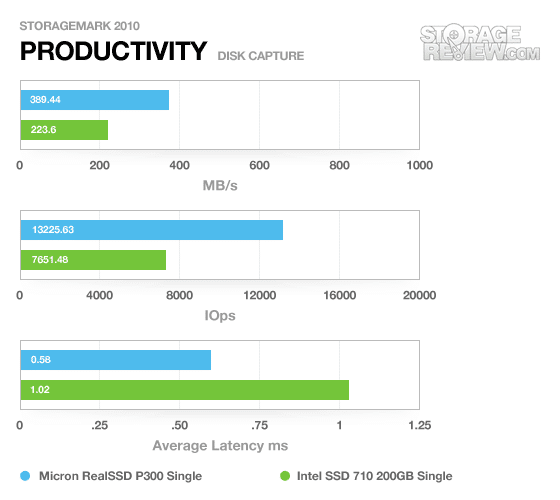
In our Productivity trace we measured an average transfer speed of 223MB/s and 7,650 IOPS with an average latency of 1.01ms.
Our third real-life test covers disk activity in a gaming environment. Unlike the HTPC or Productivity trace, this one relies heavily on the read performance of a drive. To give a simple breakdown of read/write percentages, the HTPC test is 64% write, 36% read, the Productivity test is 59% write and 41% read, while the gaming trace is 6% write and 94% read. The test consists of a Windows 7 Ultimate 64-bit system pre-configured with Steam, with Grand Theft Auto 4, Left 4 Dead 2, and Mass Effect 2 already downloaded and installed. The trace captures the heavy read activity of each game loading from the start, as well as textures as the game progresses. In this trace we recorded 426MB being written to the drive and 7,235MB being read.
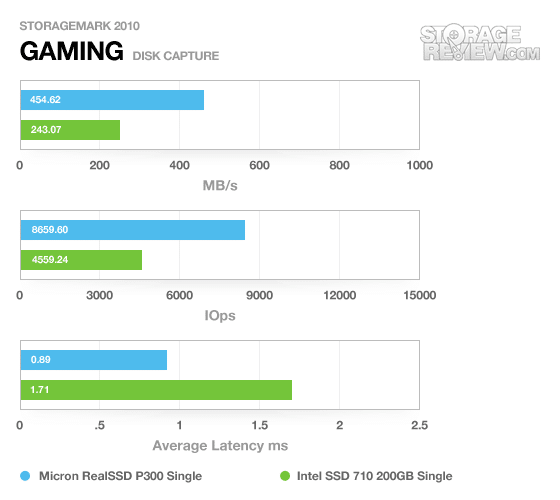
In the client-targeted Gaming trace we measured an average transfer speed of 243MB/s, which is close to the upper-end of what SATA 3.0Gb/s can support. Average IOPS and latency during this test measured 4,560 and 1.71ms respectively.
Power Consumption
As we mentioned up above, the Intel SSD 710 adds an array of capacitors to the mix, to help prevent data corruption in the event of power loss. To make this happen, especially on a consumer-grade budget, Intel went with six tantalum-based KEMET Organic Capacitors (KO-CAP) instead of a super-capacitor this is generally seen on enterprise SSDs. These are less expensive, but more importantly, get the same intended job done. Paired with mobile SDR memory, the power requirements for the cache are low enough that six caps with a combined storage capacity of about 0.003F (compared to the 0.18F capacitor on the Viking Modular SSD). If works it doesn’t matter what the capacity is.
The other job of the capacitor array is protect the drive in the event of being hot-swapped. In hot-swap situations, it is possible that under certain conditions the onboard components can draw more power than what the device is rated for, and fail. These capacitors pull double-duty to provide some backup power and to soften the startup currents during normal conditions. The end results of both areas equals data and device integrity for the end user.
Intel rates the SSD 710 with a maximum active power consumption rate of 3.7W and an idle rating of 0.7W. To test these claims and see how well the drive performed under constant write, constant write, and random read conditions we used IOMeter as the workload generator and measured the power draw from the SATA-power rail during the test. The following are the average values we recorded.
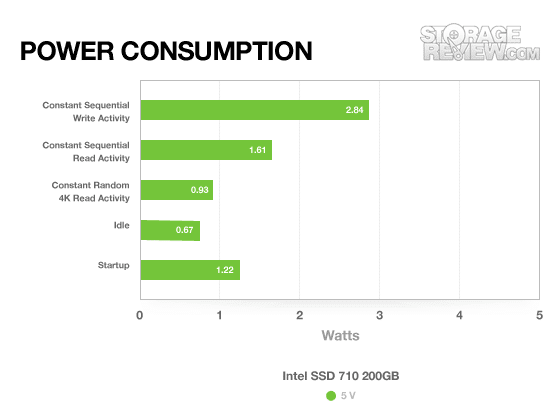
Power measurements were very close to the official rated numbers, coming in just below what Intel quoted. We measured an idle power rate of 0.67w versus the 0.7w given on the spec sheet. Peak power usage during a sequential 2MB write sequence measured 2.84w. Sequential 2MB read and randon 4K read measured 1.61w and 0.93w respectively. Startup also came in low, drawing only 1.22w in our tests.
Conclusion
We’ll leave this single drive SSD 710 review with cautious optimism, holding off on final conclusions while we churn through the multi-drive RAID and enterprise-level tests. While the performance numbers of the 710 leave quite a bit to be desired, the fact of the matter is that in the enterprise there are many cases where steady performance over many years is more important than the great burst performance you might find in a client environment. If you have questions or points you would like to see covered in the complete RAID review of the SSD 710, use the discuss link below to post to our forums.


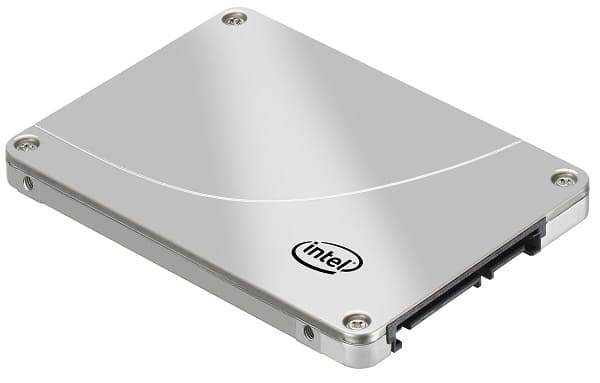
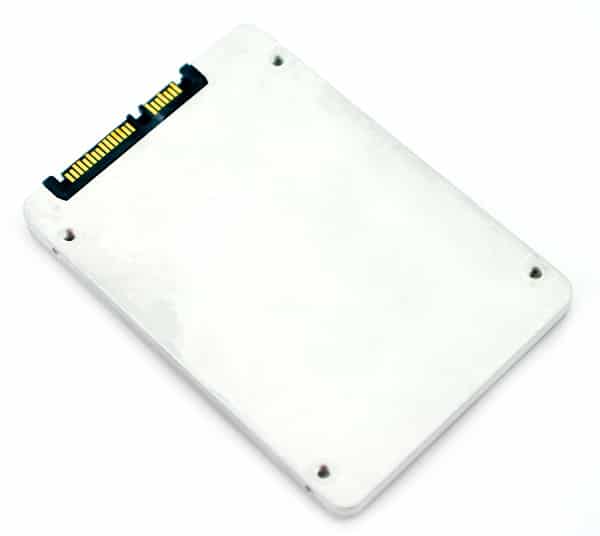

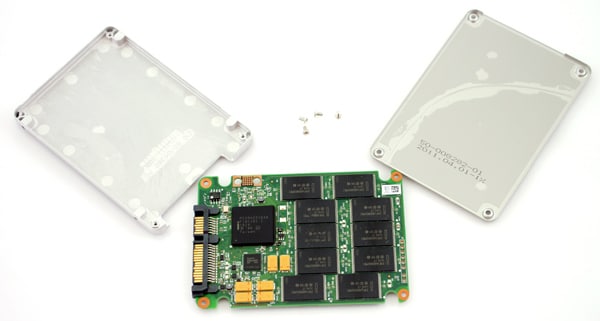

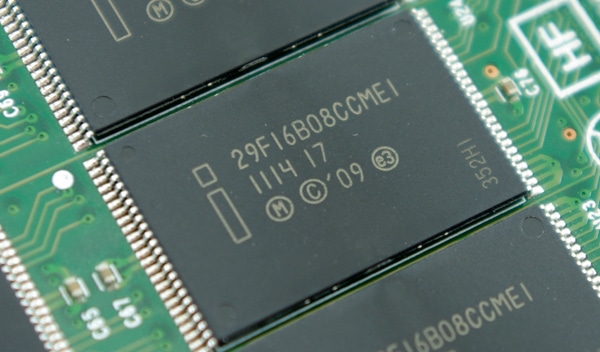
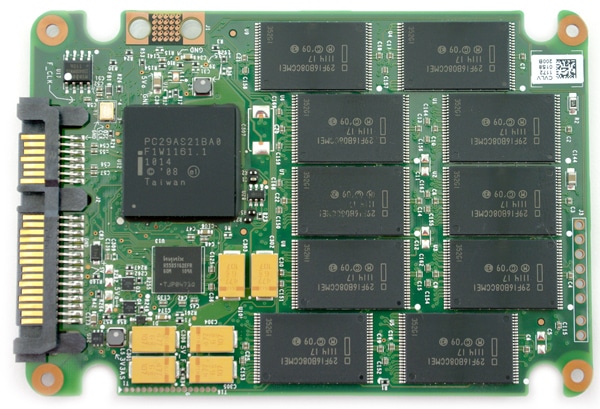
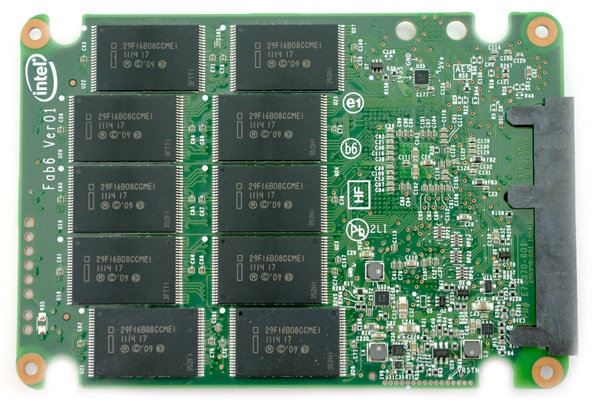
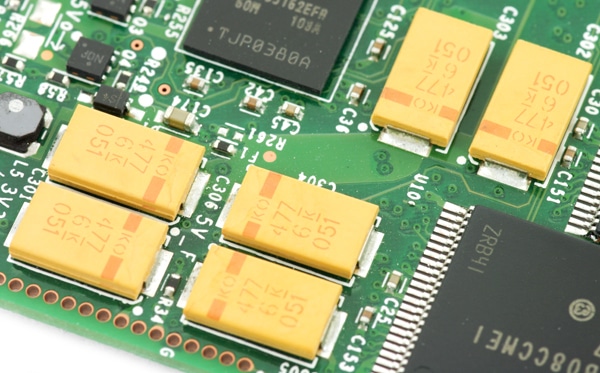


 Amazon
Amazon